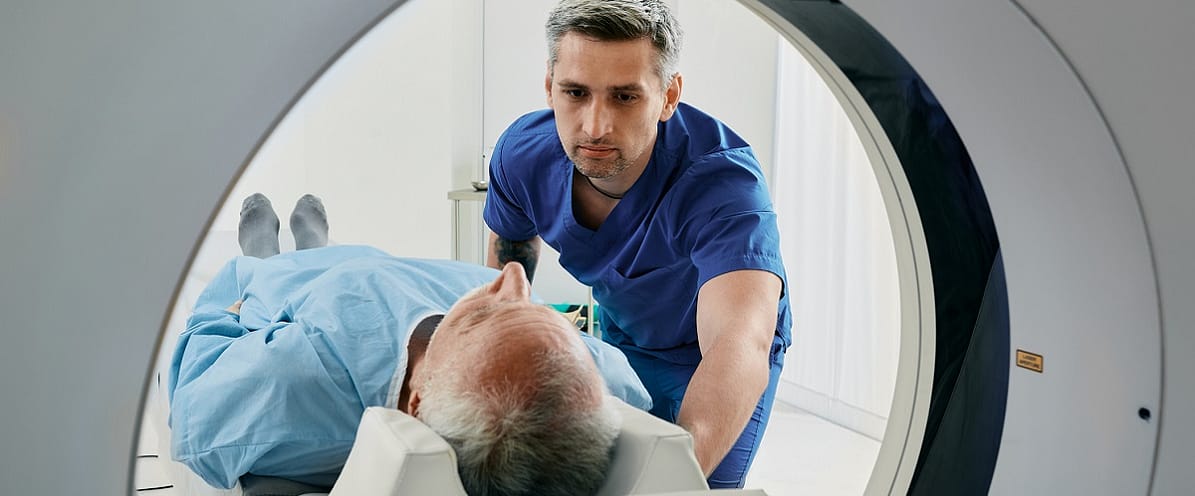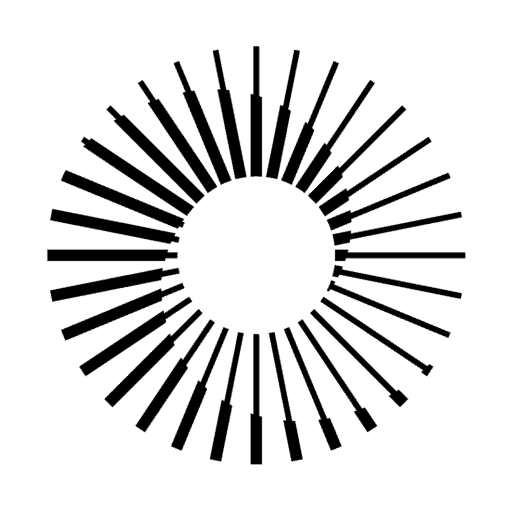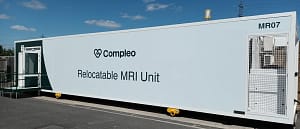What does a radiologic technologist do?
Performing diagnostic imaging examinations would be impossible without the help of a radiologic technologist, also known as a radiographer.
Their responsibilities include operating equipment, positioning the patient correctly and interpreting the final results. A radiologic technologist is a vital member of any healthcare team.
What education is needed?
Those who want to become radiologic technologists must be registered with the Health and Care Professions Council, which can be achieved through an approved degree or postgraduate qualification.
Before doing that, however, people need to choose the career path they are going to follow—which can be diagnostic radiography or therapeutic radiography.
As the name implies, diagnostic radiography focuses on the action of detecting and diagnosing a medical condition, while therapeutic radiography is more about using radiation to treat diseases.
The job outlook is positive for both options, so in the end, the right choice depends on the aspirations and personal preferences of the person who is going to work in the field. It is also possible to train as a radiographer in the armed forces.
Another option is applying for a diagnostic or therapeutic radiographer degree apprenticeship, which can take up to 36 months to complete. Unlike the university option, an apprenticeship combines both academic study and learning in the workplace.
Where can a radiologic technologist work?
Radiologic technologists have plenty of opportunities: They can work in hospitals, clinics and radiology laboratories. Some professionals find work in diagnostic or imaging centres, physicians’ offices, outpatient care facilities and research centres.
The necessary skillset
The most important skills for a radiologist technologist can be grouped into two categories: technical skills and communication skills.
Technical skills
Without a doubt, radiologic technologists would not be able to perform diagnostic imaging examinations without a solid understanding of anatomy and physiology. They also need to be able to operate equipment in a safe and efficient way, in order to get the results, the patients need.
Medical software keeps changing and evolving, and radiographs must keep up with it. Also, the use of various chemicals for improved results requires science skills.
Communication skills
Although many people don’t realise it, the interaction with a healthcare provider can have a huge impact on a patient who is in a vulnerable position.
Those who undergo imaging examinations are usually worried they might be suffering from a dangerous medical condition, and they noticed the symptoms too late. Reducing a patient’s anxiety should be a priority for every radiologic technologist.
Apart from those two sets of skills, it is worth to mention the importance of paying close attention to details and problem-solving abilities.
Not all examinations are going to go smoothly, and radiographers must be prepared for situations which are more complicated than they initially thought, but also for patients who don’t seem willing to cooperate.
People tend to underestimate how physical demanding the job of a radiologic technologist can be: Standing for long shifts and using heavy equipment can prove to be quite overwhelming for those who are used to a sedentary lifestyle.
Radiographers have to position patients in ways that allow for accurate imaging, but they also have to provide protection from radiation.
A typical day of a radiologic technologist
Although the typical day can differ, depending on the company they are working for, there are some common points all radiographers can relate to. Most of them work full-time shifts. Emergencies are common, so there may be days where radiographers have to be on call on evenings or weekends.
Preparation work
Some radiographers like to start their day by checking that all equipment is working properly, so they don’t have to deal with an unexpected situation in which a patient arrives for an appointment but the scanner is malfunctioning and there will be no way to complete the examination.
Other radiographers prefer to go over the medical records of the patients before the appointments, so they are equipped with all the information they need for a productive discussion.
Operating equipment
Throughout the day, radiologic technologists operate different types of machines to obtain images that can then be used to determine a diagnosis and to elaborate a treatment plan. Some of those machines are CT scanners, MRI scanners, X-ray machines and ultrasounds.
It’s essential that they complete their tasks safely and efficiently, so the produced images are of high-quality, and can easily be interpreted.
Interpreting images
This is where the attention to details proves to be the most useful. If they are not careful, radiographers can miss something important, and the treatment plan they come up with won’t be efficient.
There are situations in which they can work with radiologists and other healthcare professionals to identify abnormalities. Collaboration is an essential part of the job because only a team of professionals can provide the patient with the best possible care.
Average salary of a radiologic technologist
For many people, salary is an important factor when it comes to choosing a job. The estimated salary of a radiographer in London is £36,317 per year.
There are many factors that can influence this sum. For example, radiologic technologists with more years of experience are eligible for higher salaries, when compared to those who just started working in the field.
Salaries can change depending on the specialisations of the radiologic technologists as well. Those who specialise in computerised tomography have higher salaries than those who don’t because they can provide more information.
It is also worth to mention the existence of factors that apply to most career paths, not just those in the radiography field, such as demand in the job market which is very high at the moment.
In the end, a radiologic technologist plays a crucial role in detecting, diagnosing and monitoring a health condition. During the process, communication and technical skills are used together to provide the patient with the best care possible.





